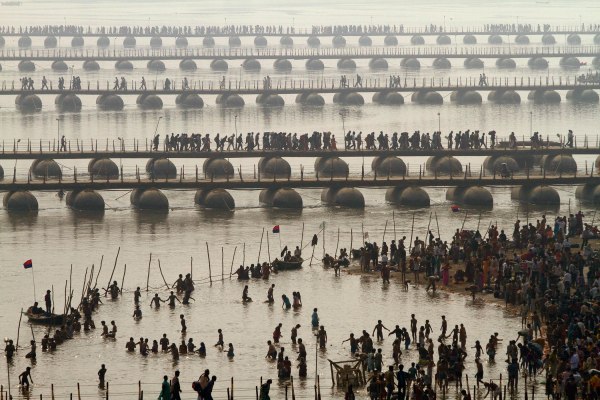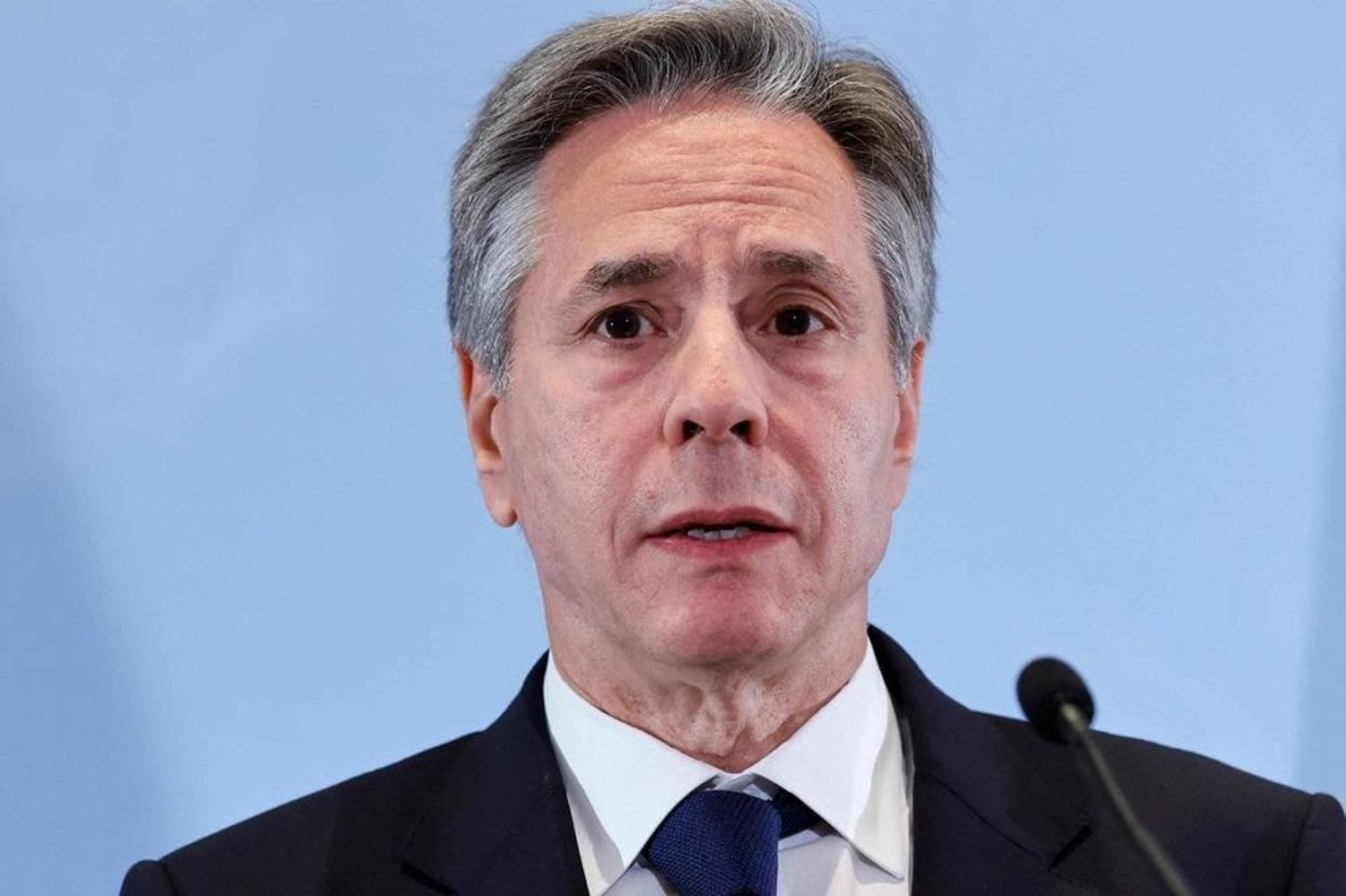

In a show of unity and devotion, Naga Sadhus from Shri Panchayati Akhara Mahanirvani and Shri Shambhu Panchayati Atal Akhara took the 'Amrit Snan' on Tuesday during the ongoing Maha Kumbh Mela. This is a historic moment as the two akharas, known for their mutual rivalry, are coming together for the holy dip. The authorities are expecting a record number of devotees to participate in the ceremony, bringing together people from different walks of life. As per the schedule, the next to take the holy dip are Shri Taponidhi Panchayati Shri Niranjani Akhara and Shri Panchayati Akhara Anand. The police have ramped up security measures to ensure a smooth and peaceful procession.
Amrit Snan: A Moment of Unity and Devotion at Maha Kumbh Mela
The ongoing Maha Kumbh Mela, one of the world's largest religious gatherings, witnessed a historic event on Tuesday with the "Amrit Snan" (holy dip) taken by Naga Sadhus from two rival akharas. This act of unity and devotion marks a significant milestone in the centuries-old tradition of the Kumbh Mela.
Background:
The Kumbh Mela is a Hindu pilgrimage where devotees gather at the confluence of sacred rivers to take a holy dip and wash away their sins. The Mela, held every 12 years, attracts millions of pilgrims from across India and beyond.
Naga Sadhus are revered Hindu ascetics who live a renounced life. They are known for their extreme austerity and spiritual practices. During the Kumbh Mela, Naga Sadhus play a prominent role in the religious rituals and processions.
Historic Unity:
Traditionally, the Maha Kumbh Mela is marked by intense rivalry between different akharas, groups of Naga Sadhus. However, this year, two rival akharas, Shri Panchayati Akhara Mahanirvani and Shri Shambhu Panchayati Atal Akhara, set aside their differences to take the holy dip together.
This historic moment symbolizes a call for unity and harmony among Hindu sects. It also highlights the spiritual significance of the Kumbh Mela as a time for shedding old divisions and embracing spiritual awakening.
Expected Attendance and Security:
Authorities are expecting a record number of devotees to participate in the Amrit Snan ceremonies. As per the schedule, the next to take the holy dip are Shri Taponidhi Panchayati Shri Niranjani Akhara and Shri Panchayati Akhara Anand.
The police have increased security measures to ensure a smooth and peaceful procession. Pilgrims are advised to follow all safety guidelines and cooperate with authorities for a harmonious and memorable experience.
Top 5 FAQs and Answers:
1. What is the significance of Amrit Snan?
Amrit Snan is the holy dip taken by devotees at the confluence of sacred rivers during the Kumbh Mela. It is believed to cleanse sins and bring spiritual purification.
2. Why is the unity between the two akharas significant?
The unity between these rival akharas is a historic moment that symbolizes a call for harmony and spiritual awakening among Hindu sects.
3. How many people are expected to attend the Amrit Snan ceremonies?
Authorities expect a record number of devotees to participate in the Amrit Snan ceremonies, bringing together people from different walks of life.
4. What security measures are in place?
The police have ramped up security measures to ensure a smooth and peaceful procession. Pilgrims are advised to follow all safety guidelines.
5. What is the schedule for the remaining Amrit Snan ceremonies?
The next to take the holy dip are Shri Taponidhi Panchayati Shri Niranjani Akhara and Shri Panchayati Akhara Anand. The exact dates and times will be announced by the authorities.

The 45-day long Kumbh Mela festival, known as the largest religious gathering in the world, has begun in the Indian city of Prayagraj. The festival, held once every 12 years, has attracted an estimated 400 million attendees this year due to a rare astronomical alignment. With millions taking a holy dip on the first day, the festival has garnered international attention and can even be seen from space.

Indian leaders Rahul and Priyanka Gandhi took to social media to pay their respects to the soldiers who lost their lives in a tragic mishap in Bandipora district of Jammu and Kashmir. The accident occurred due to inclement weather and poor visibility, further worsening the tensions in the conflict-ridden region. The injured soldiers were immediately rushed to nearby hospitals for medical care, with three succumbing to their injuries. This unfortunate incident highlights the dangers faced by Army personnel in their line of duty in J&K.

Following a long-awaited ceasefire deal, Israel postponed the Cabinet vote due to a last-minute dispute with Hamas. While this drew criticism from world leaders, Netanyahu's government coalition raised concerns about the implementation of the deal. Amidst the tension, Egyptian Foreign Minister Abdelatty urged both parties to implement the agreement without any further delay. Netanyahu's office accused Hamas of reneging on parts of the deal, but the militant group denied this claim. Amidst the political jostling, Israel's hardline national security minister threatened to quit the government if it approves the ceasefire.

At a press briefing in the State Department, U.S. Secretary of State Antony Blinken was repeatedly interrupted by hecklers, who denounced U.S. policy on the Israel-Gaza conflict. The interruptions occurred as Blinken discussed a recent ceasefire and hostage deal in Gaza. This display highlights the ongoing tensions and divisions surrounding the Israel-Gaza conflict and the challenges facing the Biden administration in navigating this complex issue.

After months of negotiations mediated by Egypt and Qatar, a deal has been reached between Israel and Hamas to end the war in Gaza. The ceasefire, set to last for six weeks, will see the exchange of hostages for Palestinian detainees, the return of displaced Palestinians to their homes, and the repositioning of Israeli forces. The agreement, facilitated by the United States, has been welcomed by President Joe Biden and President-elect Donald Trump. Israel's security cabinet is expected to approve the deal on Thursday.

Indian Prime Minister Narendra Modi commissioned three Indian-made naval vessels, including a destroyer, a frigate, and a submarine, highlighting the country's growing self-reliance in defence manufacturing. During his address, PM Modi emphasized the importance of protecting territorial waters, ensuring freedom of navigation, and securing trade routes. He also highlighted India's expanding role in the global defence sector, noting the country's increasing exports and partnerships. The commissioned vessels, equipped with advanced technology and significant indigenous content, reflect India's growing ambition in strengthening its naval capabilities.

Police and protesters clashed violently in China's Shaanxi province over the death of a 17-year-old student, Dang Changxin, who was found dead in his dormitory on January 2. The protests were triggered by allegations of a cover-up by local authorities, who reportedly closed the case within 24 hours and did not allow the student's mother to see his body. The non-for-profit group Human Rights In China claims suspicious circumstances surrounding Dang's death, including witness reports of a struggle in his dormitory and the suggestion that he was pushed from the roof.

Take a deeper dive into the world of Hindu monks and their role in managing the sacred Kumbh Mela event. Learn about the organisational structure of Akharas and their historical significance, as well as their influence over the Amrit Snan ritual. Discover how the Amrit Snan order has evolved over the centuries and the current power dynamic between the Akharas and the institutionalised process.

Laurene Powell Jobs, the wife of the late Apple co-founder Steve Jobs, has been drawn towards the spiritual heritage of India and will be attending the Maha Kumbh Mela 2025 in Prayagraj. The grand gathering, known as one of the largest spiritual gatherings in the world, kicked off today and is expected to draw millions of pilgrims from around the globe. Powell Jobs will be staying at the Niranjani Akhara’s camp under the guidance of Kailashanand Giri Maharaj and has been given the Hindu name "Kamala." This reflects her deep connection to Hindu traditions and practices.